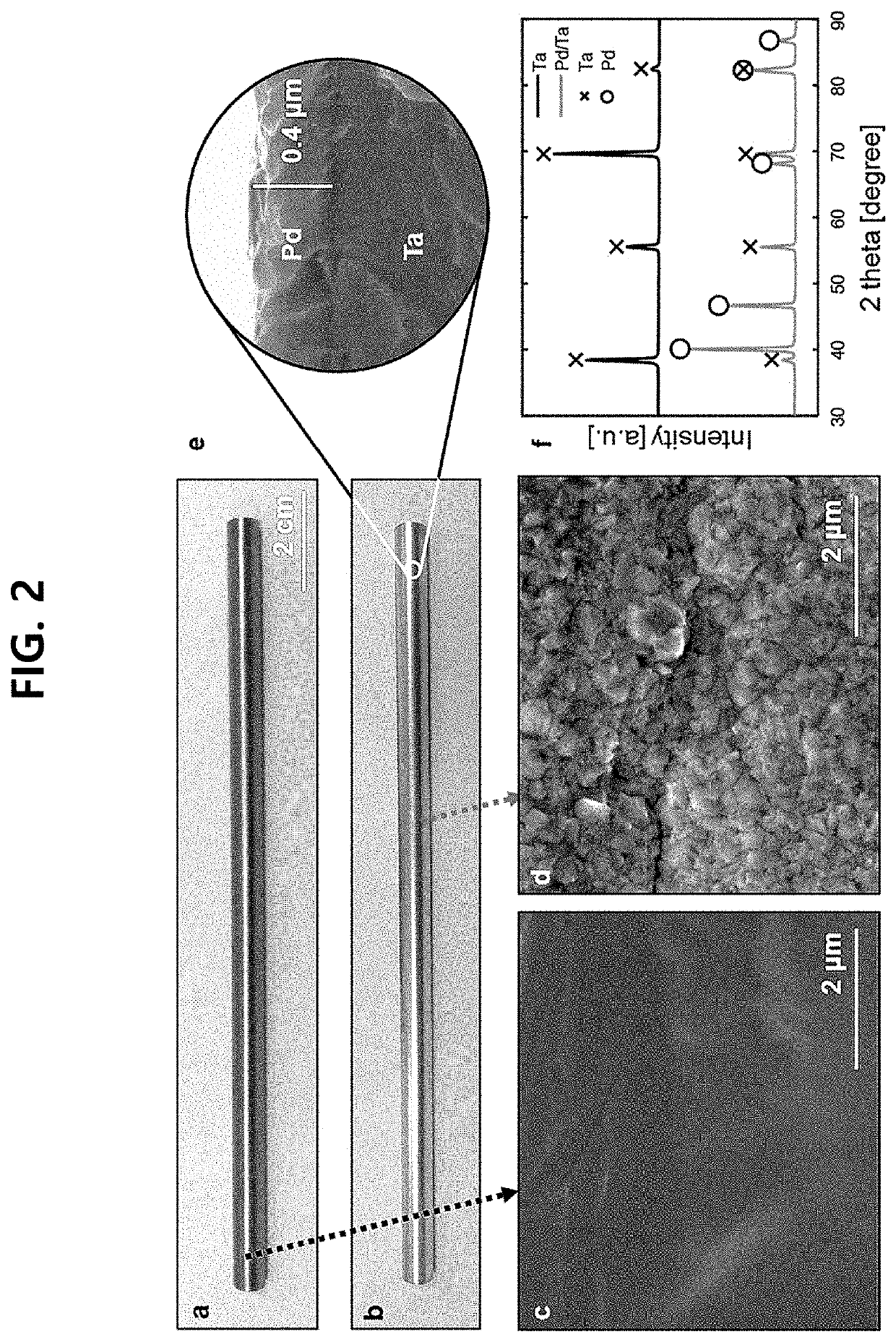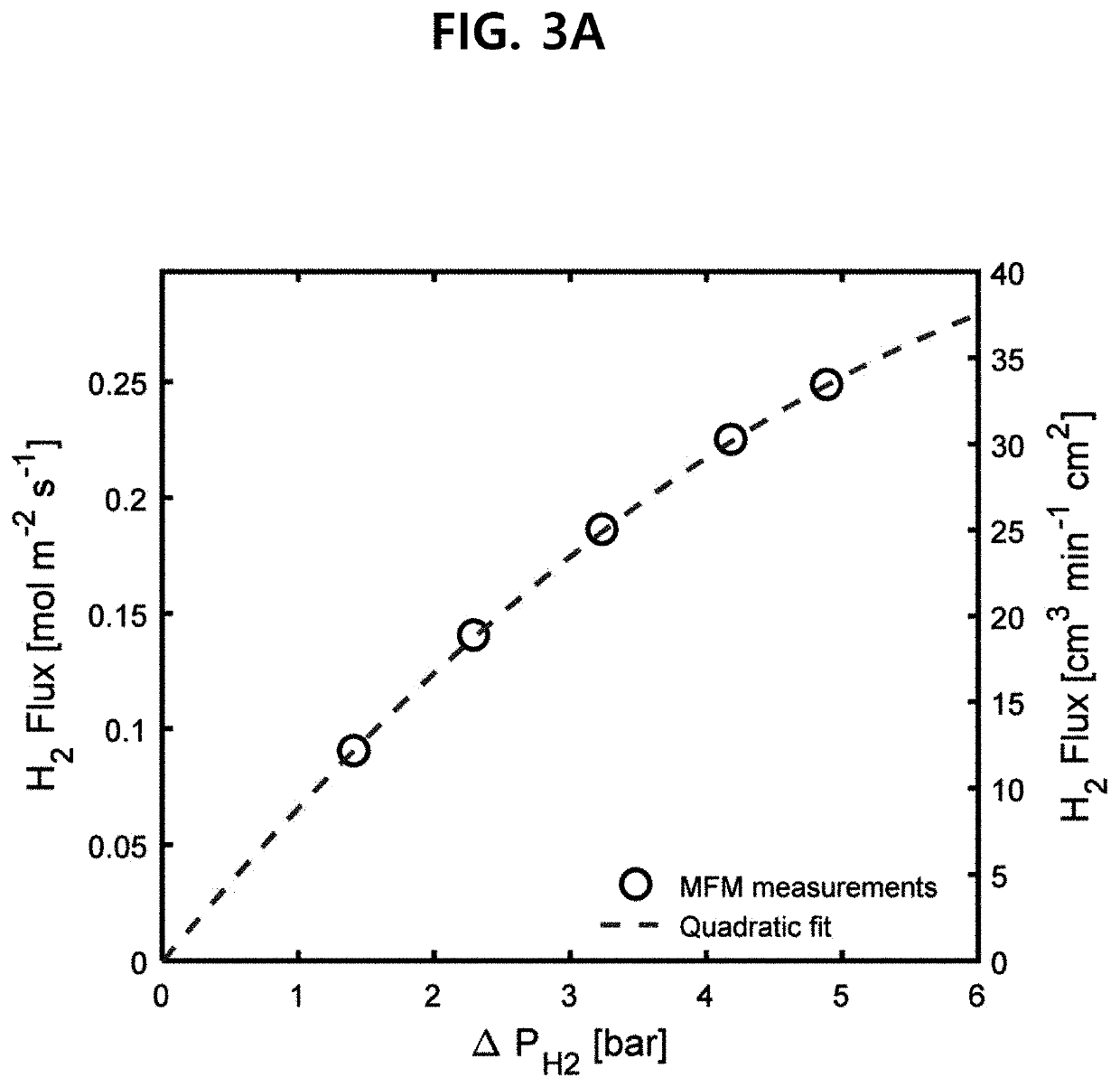Ammonia membrane reactor comprising a composite membrane
a technology of ammonia membrane and composite membrane, which is applied in the direction of physical/chemical process catalysts, metal/metal-oxide/metal-hydroxide catalysts, separation processes, etc., can solve the problems of low volumetric hydrogen density, low energy density of hydrogen, and low volumetric energy density, and achieve low hydrogen selectivity
- Summary
- Abstract
- Description
- Claims
- Application Information
AI Technical Summary
Benefits of technology
Problems solved by technology
Method used
Image
Examples
example 1
Membrane Reactor (CMR) Comprising a Pd / Ta Membrane
[0127]Preparation of Ru / La-AL2O3 Pellet Catalyst
[0128]Ruthenium ion (RuCl3.xH2O, 0.189 g, 41.1 wt % Ru, Sigma Aldrich) was stirred and dissolved for 2 hours at room temperature with 18 mL of deionized water. The prepared homogeneous solution was added to 3.0 g of La(x)-Al2O3 pellet support and impregnated with Ru ion for 12 hours at 80° C. Next, the solution was dried for 24 hours at 112° C. The Ru content of Ru / La(20)-Al2O3prepared was 1.4 wt. %, and this is the value measured by Ion Coupled Plasma-Optical Emission Spectroscopy (ICP-OES).
[0129]Preparation of Na—Y Zeolite-Based Catalyst
[0130]The ion exchange process was performed on Y zeolite (ACS Material, Y type zeolite, Cation: Na+) for about 20 hours under 70° C., such that zeolite is doped with sodium (Na). Thereafter, the product was dried for about 18 hours under 120° C. and filtered to prepare a sodium (Na)-doped zeolite.
[0131]Pd / Ta Composite Membrane
[0132]Ta tube (>99.95%; K...
example 2
Membrane Reactor in which a Sealing Insert is Added
[0136]The membrane reactor was prepared in the same manner as Example 1, except for further adding a sealing insert at both ends of the tube-type Pd / Ta membrane.
PUM
| Property | Measurement | Unit |
|---|---|---|
| thickness | aaaaa | aaaaa |
| operating temperature | aaaaa | aaaaa |
| pressure | aaaaa | aaaaa |
Abstract
Description
Claims
Application Information
 Login to View More
Login to View More - R&D
- Intellectual Property
- Life Sciences
- Materials
- Tech Scout
- Unparalleled Data Quality
- Higher Quality Content
- 60% Fewer Hallucinations
Browse by: Latest US Patents, China's latest patents, Technical Efficacy Thesaurus, Application Domain, Technology Topic, Popular Technical Reports.
© 2025 PatSnap. All rights reserved.Legal|Privacy policy|Modern Slavery Act Transparency Statement|Sitemap|About US| Contact US: help@patsnap.com



